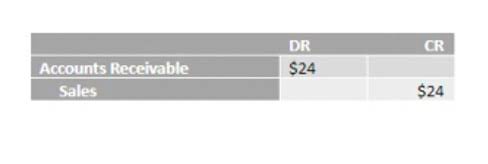
If you dispose of GAA property in an abusive transaction, you must remove it from the GAA. The recipient of the property (the person to whom it is transferred) must include your (the transferor’s) adjusted basis in the property in a GAA. If you transferred either all of the property, the last item of property, or the remaining portion of the last item of property, in a GAA, the recipient’s basis in the property is the result of the following. The facts are the same as in the example under Figuring Depreciation for a GAA, earlier.
- To calculate depreciation on real estate, you first have to know the cost basis.
- In accounting, we refer to these assets as depreciable assets.
- For example, the maker of the recently purchased printing press has stated that the equipment can process 1,000,000 pieces of paper in its useful life.
- These rules are mandatory and generally apply to tangible property placed in service after 1980 and before 1987.
- Are met, you cannot elect the section 179 deduction for the following property.
Double-Declining Balance (DDB)
- I made the following infographic to give you some examples of depreciable assets in a small business.
- The following worksheet is provided to help you figure the inclusion amount for leased listed property.
- He is the sole author of all the materials on AccountingCoach.com.
- Depreciation recapture is a provision of the tax law that requires businesses or individuals that make a profit in selling an asset that they have previously depreciated to report it as income.
- However, you redetermine the estimated useful life only when the change is substantial and there is a clear reason for making the change.
Don’t send tax questions, tax returns, or payments to the above address. In accounting, cash is considered a depreciable asset because its future worth is reduced because of inflation. If the element is the business purpose of an expenditure, its supporting evidence can be circumstantial evidence. If any of the information on the elements of an expenditure or use is confidential, it does not need to be in the account book or similar record if it is recorded at or near the time of the expenditure or use. It must be kept elsewhere and made available as support to the district director on request.
- You must use the Modified Accelerated Cost Recovery System (MACRS) to depreciate most property.
- Each machine costs $15,000 and was placed in service in 2021.
- A negative section 481(a) adjustment results in a decrease in taxable income.
- Dean allocates the carryover amount to the cost of section 179 property placed in service in Dean’s sole proprietorship, and notes that allocation in the books and records.
Best Free Accounting Software for Small Businesses
The property must be for use in a trade or business or for the production of income. Property you acquired before 1981 or after 1986 is not ACRS recovery property. For information on depreciating property acquired before 1981, see chapter 2.
Double declining balance depreciation

Also remember that depreciation expense needs to be added back in when calculating working capital for your business, since it is not a cash expense. Small businesses should use Form 4562PDF to figure their deduction for depreciation. Depreciable assets are reported on the balance sheet under the asset heading property, plant and equipment. The four methods described above are for managerial and business valuation purposes.
What Does It Mean to Depreciate a Rental Property?

Listed property includes cars, other means of transportation, and certain computers. The depreciation process ends at the conclusion of the asset’s class life, when you sell it, or if it simply wears out or otherwise fails in some respect before its class life has run down. It would also end if you stopped using the asset for income-earning purposes and began using it solely for personal reasons, such as if you retired that $30,000 vehicle from your cab fleet to drive it yourself. Depreciable property is property you buy to help you make money, such as with your business.
For example, if a company’s original useful life estimate is 10 years, but new technology is likely to render it obsolete after eight years, the company may be able to accelerate depreciation based on a shorter schedule. In this situation, a company that is depreciating assets based on a 10-year schedule may be able to increase yearly depreciation https://www.bookstime.com/ values based on a newly abbreviated eight-year useful life estimate. The depreciation of assets using the straight-line model divides the cost of an asset by the number of years in its estimated life calculation to determine a yearly depreciation value. The value is depreciated in equal amounts over the course of the estimated useful life.
Declining Balance

MACRS consists of two depreciation systems, the General Depreciation System (GDS) and the Alternative Depreciation System (ADS). Generally, these systems provide different methods and recovery periods to use in figuring depreciation deductions. On July 1, 2023, you placed in service in your business qualified property (that is not long production period property or certain aircraft) that cost $450,000 and that you acquired after September 27, 2017. You deduct 80% of the cost ($360,000) as a special depreciation allowance for 2023. You use the remaining cost of the property to figure a regular MACRS depreciation deduction for your property for 2023 and later years.
- The FMV of the property is considered to be the same as the corporation’s adjusted basis figured in this way minus straight line depreciation, unless the value is unrealistic.
- If your business use of the car had been less than 100% during any year, your depreciation deduction would have been less than the maximum amount allowable for that year.
- For this purpose, participations and residuals are defined as costs, which by contract vary with the amount of income earned in connection with the property.
- If you acquire property in some other way, such as by inheriting it, getting it as a gift, or building it yourself, you figure your unadjusted basis under other rules.
- If you dispose of GAA property in an abusive transaction, you must remove it from the GAA.
- Good small-business accounting software lets you record depreciation, but the process will probably still require manual calculations.
This property generally has a recovery period of 7 years for GDS or 12 years for ADS. In chapter 4 for the class lives or the recovery periods for GDS and ADS for the following. If it is described in Table B-1, also check Table B-2 to find the activity in which the property is being used. If the activity is described in Table B-2, depreciable assets read the text (if any) under the title to determine if the property is specifically included in that asset class. If it is, use the recovery period shown in the appropriate column of Table B-2 following the description of the activity. You will need to look at both Table B-1 and Table B-2 to find the correct recovery period.